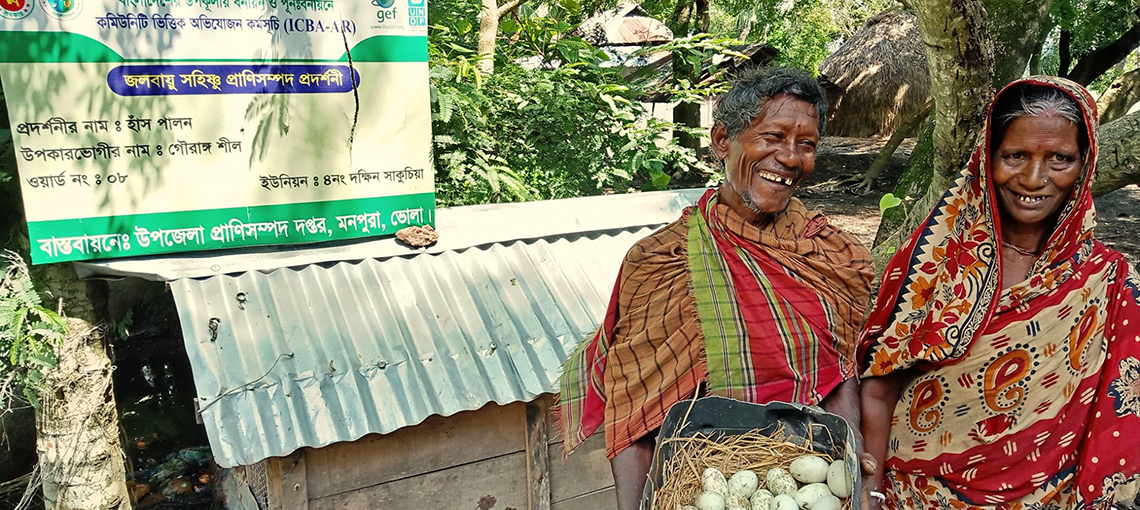Forest Management
Forest Management
Forest Management
Taxonomy Term List
Readiness for the National Adaptation Plan Process in Argentina
The project supported the Government of Argentina in establishing its adaptation planning process. This involved identifying gaps, capacity building, and integrating climate change considerations across national, regional, and local levels. By doing so, the project facilitated the assessment and reduction of vulnerability to the adverse effects of climate change by integrating climate change adaptation into the country's development strategies.
The scope of the project included the preparation of the National Adaptation Plan (NAP) with a regional and multi-sectoral approach. Additionally, it involved the development of a system to monitor and assess adaptation needs and measures under the Law 27250 Minimum Standards for Adaptation and Mitigation to Climate Change (Ley de Presupuestos Mínimos de Adaptación y Mitigación al Cambio Climático). To achieve the proposed outcomes, the project developed a communication strategy on climate change adaptation, carried out a series of studies to identify adaptation options, and supported inter-sectoral and inter-jurisdictional collaboration within the framework of the National Cabinet on Climate Change (NCCC), the Federal Environment Council (COFEMA), and the National System for Comprehensive Risk Management (SINAGIR).
In recent years, Argentina has made decisive progress in planning and implementing measures to adapt to climate change. The National Communications on Climate Change have made valuable contributions, such as providing information, conducting diagnoses, and identifying various information gaps. Within the framework of the National Climate Change Cabinet (NCCC) work, several sectoral initiatives that are directly or indirectly related to climate change adaptation were identified, as well as other information and capacity needs.
This project, funded by the Green Climate Fund (GCF) NAP Readiness Programme, aimed to deepen this work by supporting National Adaptation Plan (NAP) development. This involved facilitating the evaluation and reduction of vulnerability to the adverse effects of climate change by integrating climate change adaptation into Argentina’s development strategies.
The “Readiness for the National Adaptation Plan Process” project was launched in March 2019 to support Argentina’s efforts to assess and reduce climate change vulnerability by integrating climate change adaptation into the country's sustainable development. To achieve this goal, the project aimed to build adaptive capacity and resilience. It sought to integrate climate change adaptation into both new and existing policies, programmes, activities, and development planning processes and strategies across relevant sectors at different levels.
In particular, the project supported the Government of Argentina to:
1) Establish a national process to coordinate adaptation planning at all relevant scales with a medium and long-term perspective.
2) Identify capacity gaps and strengthen capacities for adaptation planning and implementation, integrating adaptation to climate change into national, provincial, and municipal development planning processes.
3) Support the preparation of the NAP with a regional and multi-sectoral approach in the framework of the National Climate Change Cabinet.
4) Establish a system for monitoring and assessing needs and adaptation measures.
5) Design a communication strategy on adaptation to climate change, focusing on the most vulnerable populations and improving climate information services; and
6) Support inter-sectoral and inter-jurisdictional collaboration within the framework of the National Cabinet on Climate Change.
In most of non-Patagonian Argentina, the average temperature has increased up to half a degree between 1960 and 2010, with smaller increases in the center of the country. These changes have already affected natural and human systems, and according to climate projections, impacts will intensify. More frequent and intense rainfall has resulted in more frequent floods, while dry winter periods have become longer in the west and north of the country. This has adversely affected water availability for some populations, increased the risks of grassland fires, and caused livestock stress.
Argentina has committed to addressing climate change adaptation systematically and inclusively through actions and initiatives articulated in its National Adaptation Plan, its 2016 National Determined Contribution (NDC), and it’s second NDC in 2020. The NDCs and further work implemented within the framework of the National Cabinet on Climate Change detected various information gaps and sectoral initiatives that are directly or indirectly linked to climate change adaptation. The project focused on addressing these identified gaps, including establishing a baseline for the country's adaptation situation and initiating a participatory planning process.
The project goals were achieved through three main outcomes and their corresponding activities.
Outcome 1: Institutional strengthening and coordination for the formulation and implementation of the NAP process
Activities under this outcome focused on initiating the NAP process at the national level under the framework of Law 27250 and focused on strengthening governance and institutional coordination for adaptation planning. This involved developing an appropriate strategy and relevant institutional arrangements and support, such as the formalization of the External Advisory Council through consultation with representatives of civil society organizations, political parties, academia, and Indigenous people, and setting clear groundwork. The strategy outlined clear responsibilities for government ministries and departments, specified milestones and expected outputs of the NAP process, and improved coordination and cooperation mechanisms. The approach included participatory and inclusive approaches with Indigenous communities and others to identify climate risks, impacts, and subsequent mitigation strategies. This extended to the participatory formulation of the National Adaptation Plan and support for provinces in developing Subnational Response Plans. Regulatory support further strengthened the National Climate Change Cabinet, which approved the National Plan for Climate Change Adaptation and Mitigation.
Outcome 2: Awareness raising and capacity building
This outcome built capacities to reduce vulnerability to climate change and facilitate the integration of adaptation into development. A comprehensive education, awareness, and communication strategy in climate change adaptation was created encompassing various components, such as education, awareness, access to public information, citizen participation, culture, and international cooperation. A national-level social perception study facilitated the elaboration of this strategy and evaluated audience needs and preferences. Moreover, the Climate Risk Maps Platform (SIMARCC) was updated, functioning as an interactive tool that identifies climate change risks by illustrating communities and ecosystems with the highest socio-environmental vulnerability.
Training was conducted to promote the evaluation, planning, and implementation of adaptation measures. Workshops and training sessions strengthened subnational climate teams, equipping officials at that level with the necessary tools for the development of adaptation plans. Furthermore, private sector engagement was catalyzed through the launch of the Climate Action Agreement with the Private Sector. This aimed to facilitate collaboration between public and private sectors to achieve Argentina’s climate commitments through a platform for exchange and continuous training.
Outcome 3: Baseline definition; formulation of NAPs; implementation, monitoring and reviewing
Outcome 3 involved broad climate risk analyses identifying ‘adaptation deficits.’ This included vulnerability assessments at specific planning levels within the national context that can inform impactful adaptation solutions.Various studies were conducted on topics such as transport supply chains, regional economies, social vulnerability, economic impacts of climate change, health, and cultural heritage to facilitate risk analysis and identify adaptation options. The project also supported the elaboration of provincial adaptation plans by hiring individual consultants to strengthen the provincial climate teams. Risks and needs at the regional level were identified following economic loss estimates and sector-specific damage assessments.
In collaboration with provincial teams and civil society, a multi-criteria analysis tool was developed to prioritize adaptation measures within the NAP. Measures were prioritized based on their contribution to short- and long-term sustainable socioeconomic development, costs, effectiveness, and efficiency at national and subnational levels. Additionally, efforts were made to identify existing adaptation initiatives within national government areas. Moreover, a strategy for implementing and monitoring the NAP, involving priority measures, was developed. This included the design of the NAP monitoring, evaluation, and learning (MEL) system.
Outcome 1: Institutional strengthening and coordination for the formulation and implementation of the NAP process.
Outcome 2: Awareness raising and capacity building.
Outcome 3: Baseline definition, formulation of NAPs, implementation, monitoring and reviewing.


Enhancing Research and Policy Linkages to Advance National Adaptation Planning in Guinea
The project helped Guinea to increase its capacity to adapt to climate change impacts by strengthening linkages between research policy, mainstreaming climate change adaptation into sectoral and local planning and budgeting, and advancing national funding mechanisms and private sector engagement. The project addressed the main barriers that were identified during an earlier stocktaking exercise, including the lack of links between research and policymaking, weak measurement, evaluation and funding mechanisms, and insufficient private sector engagement in adaptation efforts.
The main objective of the project “Enhancing research and policy linkages to advance National Adaptation Planning in Guinea” was to increase Guinea’s adaptive capacity to cope with climate change impacts. The project established research to support informed decision-making and capture opportunities that arise both from public funding and the private sector.
Guinea is experiencing negative socio-economic impacts of climate change due to its exposure to sea level rise, droughts, and flooding. Its Nationally Determined Contribution (NDC), submitted in 2015 and revised in 2021, outlines climate change adaptation priorities, such as the preservation and restoration of water resources, protection of ecosystems particularly in coastal zones, and ensuring food security of rural communities.
Based on stakeholder consultations and stocktaking conducted in 2016 and 2018, the main barriers to climate change adaptation mainstreaming and financing were identified as (1) the absence of links connecting research to policy to inform decision-making processes; (2) weaknesses in and/or fragmentation of existing coordination, monitoring & evaluation (M&E), and funding mechanisms; (3) the absence of adaptation in the Planning-Programming-Budgeting-Monitoring and Evaluation (PPBSE) procedures; and (4) lack of private sector involvement in the adaptation landscape.
The project aims to remove these barriers by achieving the following objectives under the three main outcomes:
1. Research-policy linkages and knowledgebase are strengthened to inform adaptation planning and decision-making:
- Establish research-policy linkages to support the NAP (National Adaptation Plan) formulation and implementation;
- Develop a climate risks and vulnerability evidence base that informs the identification and prioritization of adaptation options in the sectors of agriculture, livestock, and forestry.
2. Climate change adaptation mainstreaming is facilitated by reinforcing coordination and M&E mechanisms:
- Operationalize a sustained and suitable coordination mechanism to support mid and long-term adaptation;
- Enhance adaptation mainstreaming into sectoral and local planning and budgeting;
- Establish adaptation M&E mechanisms in adherence with the existing national M&E system.
3. A national funding mechanism and private sector engagement are expanded to support adaptation financing:
- Support the Environmental Safeguard Fund (FSE) mechanism to raise awareness on funding sources and expand mandate for the financing of adaptation actions;
- Enhance the mining sector’s engagement on adaptation and climate financing.
Furthermore, a follow-up project was proposed to fill gaps identified through this phase and develop Guinea’s NAP document. The results of the current project have informed the proposal, consolidating existing climate risks and vulnerability assessments and prioritization of adaptation options in the priority sectors of agriculture, livestock, forestry, coastal and water resources. The planned second phase will further consider promoting sustainable cities, clean cities, and blue economy for which the national strategy is currently being developed.
In addition to the main project implementing partner, the Ministry of Environment, Water and Forests, other project partners included the Ministry of Economy and Finance (MEF), National Directorate of the Environment (DNE)/current National Directorate of Pollution, Nuisance and Climate Change (DNPNCC), sectoral Strategy and Development Offices (BSD), the various research institutes, the Center for Observation, Monitoring and Environmental Information (COSIE), the National Institute of Statistics (INS), the Fund for the Environment and Natural Capital (FECN), the Bauxite Environment Network (REB), Guinea-Ecology, civil society organizations and municipalities.
Project results
Activities under Outcome 1 led to the development and validation of key documents, including those for the Research-Policy Working Group (RPWG), Environmental Research and Climate Change Plan, and Updated Climate Projections Based on Appropriate Models (AR5 RCP). An interim report on vulnerability analysis in lower, middle, and upper Guinea was developed, and activities focused on setting up and running the RPWG team and prioritizing adaptation options in key sectors such as agriculture, livestock, forestry, and coastal and water resources. A Climate Risks and Vulnerability Assessment (CRVA) report was completed, including training modules used to train representatives from sectoral ministerial departments. This included strengthening the capacities of the national CRVA team to collect information on the impacts of climate change on key sectors in three of the four natural regions of Guinea. A workshop was conducted to prioritize adaptation options for key sectors.
Under Outcome 2, an operational manual was created for the National Committee on Climate Change (CNCC), featuring tools like a project monitoring tool, multi-year CNCC work plan, climate action monitoring system, management chart, and reporting system. A monitoring and evaluation framework for climate change adaptation, aligned with the national monitoring and evaluation system (DISE) of the National Plan for Economic and Social Development (PNDES), was established. Capacity-building sessions were conducted for government officials on integrating adaptation into the DISE. Additionally, studies focused on creating a sustainable coordination mechanism to support medium and long-term adaptation and updating climate models and projections, with corresponding training for managers. Data was collected and improved through a national stakeholder workshop. Furthermore, discussions with the National Institute of Statistics (INS) aimed to progress a partnership agreement for updating the statistical yearbook using the monitoring and evaluation framework. Technical guidelines were also developed to integrate climate change adaptation into sectoral planning and budgeting.
Outcome 3 focused on supporting the Environment and Natural Capital Fund (FECN) and the Bauxite Environment Network (REB). Discussions led to the finalization of terms of reference for activities, including conducting and validating a study on potential funding sources for the FECN and developing a strategic plan. The FECN mechanism was supported to raise awareness of funding sources and expand the mandate for financing adaptation actions. The project will also support the implementation of the REB 2024-2025 action plan to facilitate the private sector's commitment to adapting to climate change. Moreover, efforts were made to enhance the mining sector's engagement in adaptation and climate financing.
Outcome 1: Research-policy linkages and knowledge base are strengthened to inform adaptation planning and decision-making.
Outcome 2: Climate change adaptation mainstreaming is facilitated by reinforcing coordination and monitoring and evaluation mechanisms.
Outcome 3: A national funding mechanism and private sector engagement are expanded to increase climate change adaptation financing.
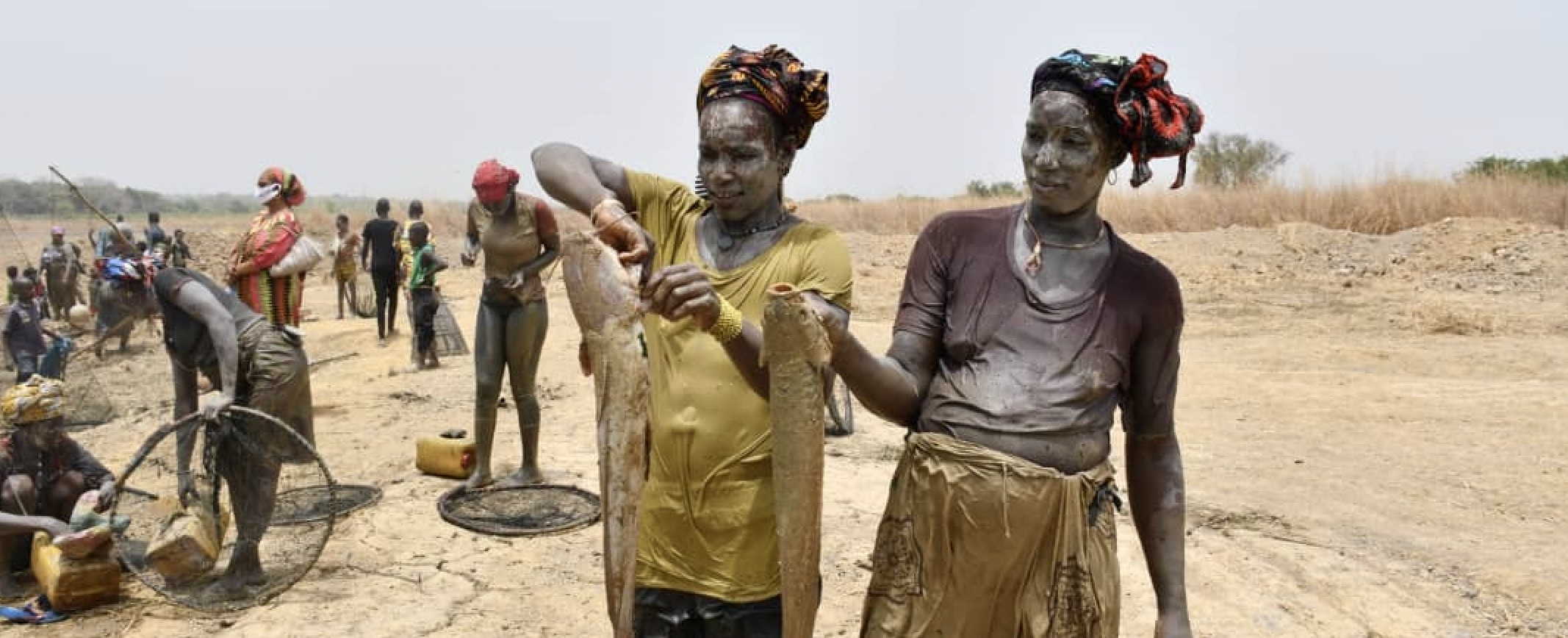
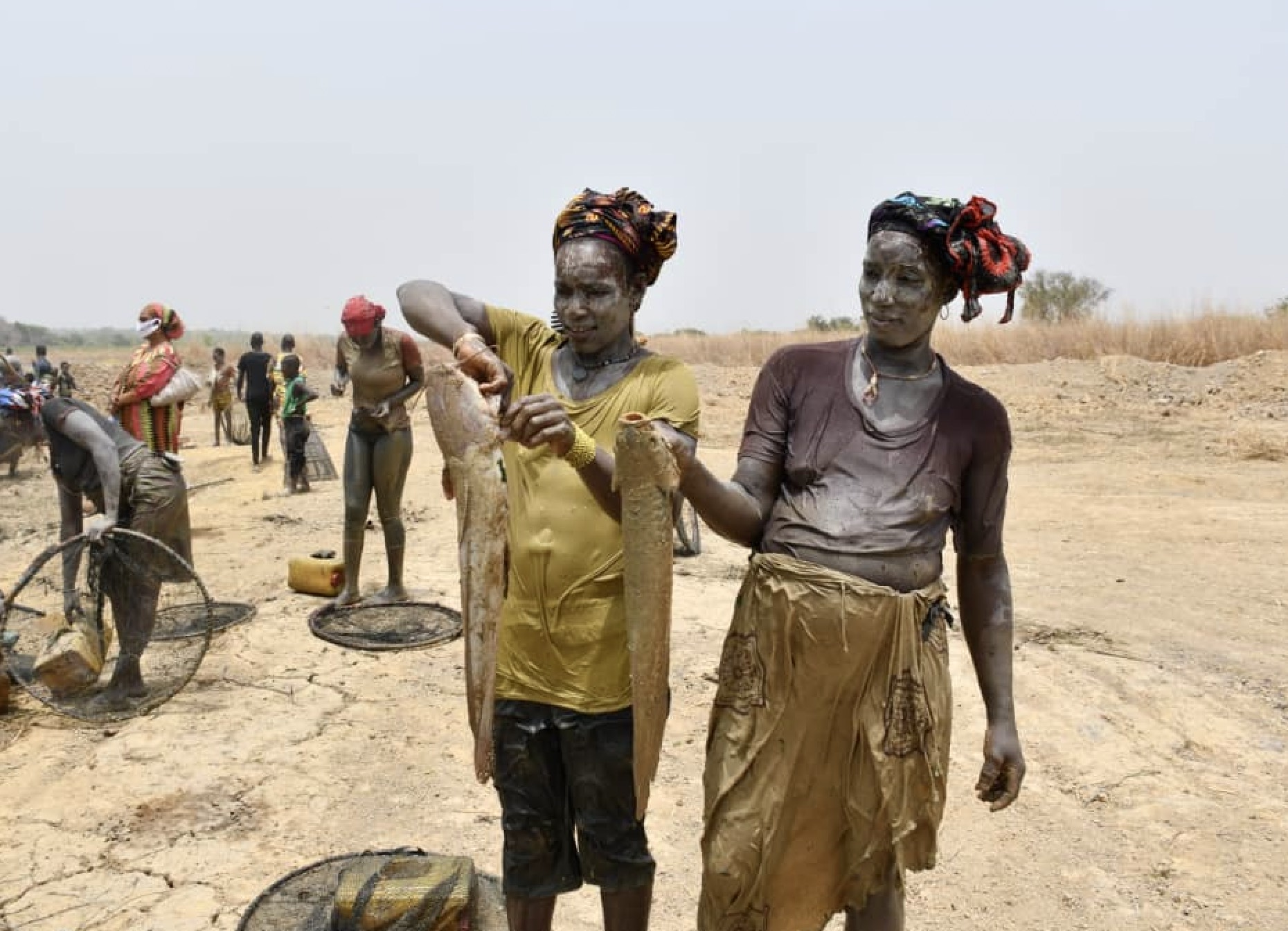
Advance the National Adaptation Plans process for medium term investment planning in climate-sensitive sectors and coastal areas in Liberia
The project’s objective was to support the Government of Liberia in advancing its National Adaptation Plan (NAP) process in climate-sensitive sectors: agriculture, energy, waste management, forestry, health, and coastal areas. The project was a first of its kind, approved by the Green Climate Fund (GCF) Board in November 2016 prior to the introduction of the GCF Readiness guidebook. The project informed the introduction and subsequent evolution of the guidelines on adaptation planning in Liberia.
Significant outcomes and outputs were achieved across four key areas. In Outcome 1, institutional frameworks were strengthened, and a climate change strategy was developed. Outcome 2 focused on expanding the knowledge base through risk assessments, economic studies, and a knowledge-sharing platform. Outcome 3 enhanced capacity for mainstreaming climate change into planning and budgeting, including technical guidelines and capacity-building programs. Lastly, Outcome 4 supported the scaling up of prioritized adaptation investments, identified policy options, and fostered public-private partnerships. These efforts contributed to Liberia's National Adaptation Plan, promoting resilience and sustainability in the face of climate change.
The GCF-funded project "Advance the NAPs process for medium-term investment planning in climate-sensitive sectors (i.e. agriculture, energy, waste management, forestry and health) and coastal areas in Liberia" aimed to strengthen institutional frameworks and coordination for the implementation of the NAP process, expand the knowledge base for scaling up adaptation, build capacity for mainstreaming climate change adaptation into planning and budgeting processes and systems, and formulate financing mechanisms for scaling-up adaptation.
In addition to the project delivery partner, the Environment Protection Agency and the National Climate Change Secretariat, other key partners included the Ministry of Finance and Development Planning, Ministry of Agriculture, National Disaster Management Agency, University of Liberia, Liberia Maritime Authority, Bureau of National Fisheries, Liberia National Department of Meteorology, Ministry of Mines & Energy, Ministry of Health, Liberia Institute of Statistics and Geo-Information Services, and the University of Liberia.
Liberia, like other developing countries, especially Least Developed Countries (LDCs), is vulnerable to the impacts of climate change. Despite having a low carbon footprint, the country anticipates severe consequences in key sectors, including agriculture, fisheries, forests, energy production related to the availability of water resources, coastal areas, and health. Approximately 70% of the population relies on agriculture for their livelihoods, with rural areas experiencing up to 80% vulnerability to food insecurity, according to the Environmental Protection Agency. Coastal regions, spanning 350 miles, face challenges from ongoing coastal erosion, sea level rise, storms, precipitation changes, and warmer ocean temperatures. Health risks include heightened vulnerability to diseases like malaria, cholera, and diarrheal diseases. Moreover, climate change may adversely affect hydroelectric generation from the Mount Coffee hydropower plant.
Liberia initiated its NAP process in 2015, establishing a roadmap in consultation with key stakeholders. This roadmap, grounded in the evaluation of existing climate initiatives and identification of gaps and capacity needs, serves as a guide for the short, medium, and long-term implementation of the NAP process in Liberia.
Key Project Results
Liberia submitted its NAP to the UNFCCC in 2021, with the project providing support in its development, including organizing a multi-sectoral working group to review and validate the final document. The project also achieved the following:
- Developed a comprehensive Climate Change Policy and Response Strategy.
- Supported the ratification of the Paris Agreement.
- Established the School of Environment and Climate Change at the University of Liberia, offering four graduate programs.
- Assessed climate change impacts on gender.
- Developed tools for mainstreaming climate change into programmatic activities.
- Conducted climate vulnerability/economic assessments and developed adaptation plans for key sectors.
- Implemented financial management and capacity support, including an enterprise resource planning system for the Environmental Protection Agency (EPA).
- Supported the national disaster risk assessment, development of the National Disaster Risk Reduction strategy, and launched the disaster database platform.
- Integrated economic assessments of adaptation studies in key sectors and developed a policy paper highlighting economic impacts of climate change in Liberia.
- Deployed 25 rainfall stations across the country to support the early warning system.
- Conducted capacity building for effective appraisal of investment priorities in sector ministries and mainstreamed climate change adaptation in sector strategies and plans.
- Established programs to inform and learn from the private sector on identifying climate variability and managing climate change (including setting up a private sector climate action alliance - Private Sector Working Group on Climate Change Adaptation Formed)
- Conducted policy analysis for future financing instruments/options for adaptation, including identifying alternative funding sources.
- Developed information products to support the private sector, particularly micro, small, and medium enterprises, in integrating adaptation into their investment planning.
Outcome 1: Strengthening of Institutional Frameworks and coordination for the NAPs process.
In the latter part of 2020, key activities under this outcome focused on enhancing the financial management and operational capacity of the Environmental Protection Agency (EPA) and the Climate Change Secretariat. This involved the implementation of an enterprise resource planning system. Additionally, a video documentary was developed to catalog essential project results, featuring feedback from key stakeholders and partners. The aim is to document lessons learned, challenges, success stories, and illustrate the meaningful impact the project has had in supporting climate change adaptation planning in Liberia.
1.1 Climate change strategy and action plan for adaptation developed as part of the NAP process.
Adaptation strategies and action plans for agriculture, forestry, fisheries, and coastal areas have been developed. Additionally, a national climate change adaptation strategy and action plan have been produced and formally launched, including the publication of Liberia’s NAP (2020-2030) document.
1.2. Coordination and monitoring enhanced for climate change adaptation program development across sectors.
The project assisted the Environmental Protection Agency (EPA)/National Climate Change Secretariat (NCCS) by conducting a capacity assessment and providing training in financial management, procurement, human resources, and other operational capacities. Subsequently, an Enterprise Resource Planning (ERP) System was established. The aim is to enhance the EPA's capacity in budgeting, accounting, governance, funds flow, financial reporting, internal control systems, and auditing for funds accessed from both the national budget and external sources.
Outcome 2: Expansion of the knowledge base for scaling up adaptation.
Liberia has faced a shortage of scientific data on climate impacts, including limited knowledge of current climate variability and risks, as well as the absence of an early warning system. The project expanded the knowledge base for scaling up adaptation interventions through various activities. This includes conducting economic assessments of adaptation strategies to inform funding proposals and national policies. Climate vulnerability and risk assessments were carried out to establish an evidence base for research, planning, and implementing adaptation action plans. Additionally, a knowledge-sharing platform was developed to facilitate information exchange and collaboration.
2.1. Risk assessments and economic impact studies in climate sensitive sectors conducted and incorporated in official data systems.
The project conducted a climate vulnerability and risk assessment for several sectors, including coastal, agriculture, forestry, fisheries, energy, and health (ongoing). Simultaneously, awareness-raising initiatives with relevant stakeholders were undertaken.
2.2. Effective knowledge sharing platform as a resource for climate relevant planning established.
The project conducted a gap analysis and collaborated with relevant IT staff and an international consulting firm to develop a climate change knowledge management platform. This platform, hosted at http://ccksp.gnf.tf, aims to expand knowledge and build capacities within the Liberian government. It serves as a repository for climate change-related data and information and offers training programs for a diverse audience, including practitioners, students, policymakers, and advocates. The project conducted at least six training sessions for staff from sectors such as waste management, forestry, energy, health, agriculture, and coastal management.
2.3. Climate Change disasters-related database developed.
The project procured and supplied meteorology equipment, including 25 rain gauges, for the Meteorology Department. These rain gauges have been strategically installed nationwide to enhance the production and distribution of weather information to various users, including farmers and fishermen. In addition, six staff members from the Meteorology Department received training on the operation of the system, ensuring effective utilization of the equipment.
Outcome 3: Strengthened capacity for mainstreaming CCA into planning, and budgeting processes and systems.
The project supported the formulation of mechanisms for scaling up adaptation investments and addressing financial gaps through various activities. This included assessing economic impacts and opportunities arising from climate change.
3.1. Technical guidelines for the personnel of the Ministry of Finance & Development Planning and other relevant Ministries, to mainstream climate change into budgeting and planning processes incorporating gender disaggregated data.
The project developed technical guidelines for personnel at the Ministry of Finance & Development Planning (MFDP) and other relevant ministries. These guidelines are designed to facilitate the mainstreaming of climate change considerations into budgeting and planning processes. Additionally, training sessions were conducted to familiarize personnel from MFDP and other sectoral entities with the use of these guidelines.
3.2. Capacity building programs on implementing adaptation investments and strategies established.
The project conducted a capacity assessment and developed a three-year climate change capacity development plan for the EPA and key sectoral agencies. The University of Liberia initiated its graduate program in 2019, the "School of Environmental Studies and Climate Change (SESCC)," in partnership with the EPA and UNDP. The project facilitated the provision of climate change adaptation textbooks to the school and fostered a partnership between the University of Liberia and the Least Developed Countries Universities Consortium for Climate Change (LUCCC), promoting research, knowledge sharing, and education in climate change. Eleven government staff members completed international training in climate change adaptation in Israel, and a south-south exchange tour for policymakers on knowledge sharing was successfully completed.
3.3. Monitoring and reporting system to track adaptation investments and implementation.
The project developed a detailed design for tracking climate finance, reviewed by stakeholders. An IT firm was hired to support the creation of a climate finance tracking system, integrated with monitoring and evaluation (M&E) indicators, and training sessions on the climate-proofing tool were conducted for the EPA team and other stakeholders. The National Monitoring System was assessed, resulting in a report with recommendations for integration into the national financial reporting systems, incorporating tracking tools and criteria to estimate adaptation financing in Liberia.
Outcome 4: Mechanisms to support scaling up of prioritized adaptation investments and addressing of financial gaps.
Outcome 4 included policy analysis for future financing instruments and options for adaptation. Alternative funding sources, such as private and local funds, were identified. The project created information products to support private sector engagement, with a focus on micro, small, and medium enterprises, helping them integrate adaptation into their investment planning. Furthermore, the project supported the development of costed investment plans for the agricultural sector and coastal areas in collaboration with partners. It successfully identified and prioritized at least two bankable projects and developed strategies to encourage private investments in new technologies and foster public-private partnerships for implementing climate change adaptation interventions.
4.1. Sector and area based costed investment plans prepared for scaling up adaptation in agriculture and coastal areas that take into account climate change risks and opportunities.
The project successfully developed and validated adaptation options for priority sectors, including agriculture, forestry, coastal areas, waste management, energy, and fisheries. This included the preparation of two bankable adaptation projects (agriculture and forestry, mangroves and ecotourism) for multi-sector implementation.
4.2. Policy options for scaling up financing for adaptation investments identified and recommended.
The project developed specific climate finance advisory products, offering detailed information on the country's climate finance landscape, criteria, funding amounts, and eligibility requirements. Stakeholders underwent climate finance training to enhance their understanding of available financing options. The project's identification of additional financing windows beyond traditional sources provides Liberia with opportunities to expand its resource mobilization for climate change action.
4.2. Foster Public Private Partnerships (PPPs) to support adaptation investments.
The project facilitated the creation of a private sector platform and developed knowledge products to support climate change adaptation planning. This included capacity-building support to encourage private sector engagement in climate action and attract private finance through partnerships and other financing options. The establishment of the Liberia Private Sector Climate Change Alliance served as a platform for collaboration between the private sector, government, and other stakeholders on climate initiatives. Great enthusiasm exists within the private sector to engage the government upon the realization that climate change represents a serious risk to private investment.
Crisis to Action: Liberia’s national adaptation plan addresses climate change (2023)
Liberia: Government Launches Country’s National Adaption Plan (2021)
Private Sector Working Group On Climate Change Adaptation Formed (2020)
National Adaptation Plans Report: Lessons from Liberia (2019)
University of Liberia launches new degree program on Environmental Studies (2019)
Building effective climate governance in Liberia (2018)
Need for Collective Partnership to Avoid Natural Hazards Stressed (2018)
Liberia Faces Natural Hazards Threat, EPA, UNDP Warn (2018)
University of Liberia to Commence Environmental Studies Soon (2018)
Liberia: 51 Vulnerable Youth and Women Trained in Production of Energy Efficient Cook Stoves (2018)
Integrating gender in the mitigation of climate change (2018)
EPA, UNDP Hold SDGs Training in Nimba (2018)
Liberia Launches National Policy and Response Strategy on Climate Change (2018)
UNDP and partners sign agreement on graduate programme for environmental studies (2018)
Liberia set to launch National Policy and Response Strategy on Climate Change (2018)
UNDP Equips EPA Monitoring System (2018)
National Disaster Management Agency, UNDP-Liberia Conduct Training on National Disaster Readiness (2018)
Government, Partners Launch National Adaptation Plan of Liberia (2018)
Environment chief: Why we’re prioritizing climate governance in Liberia (2018)
Liberia receives first instalment of US$2.2 million GCF grant for climate adaptation (2015)
GCF approves first grants for National Adaptation Planning in Liberia and Nepal (2015)
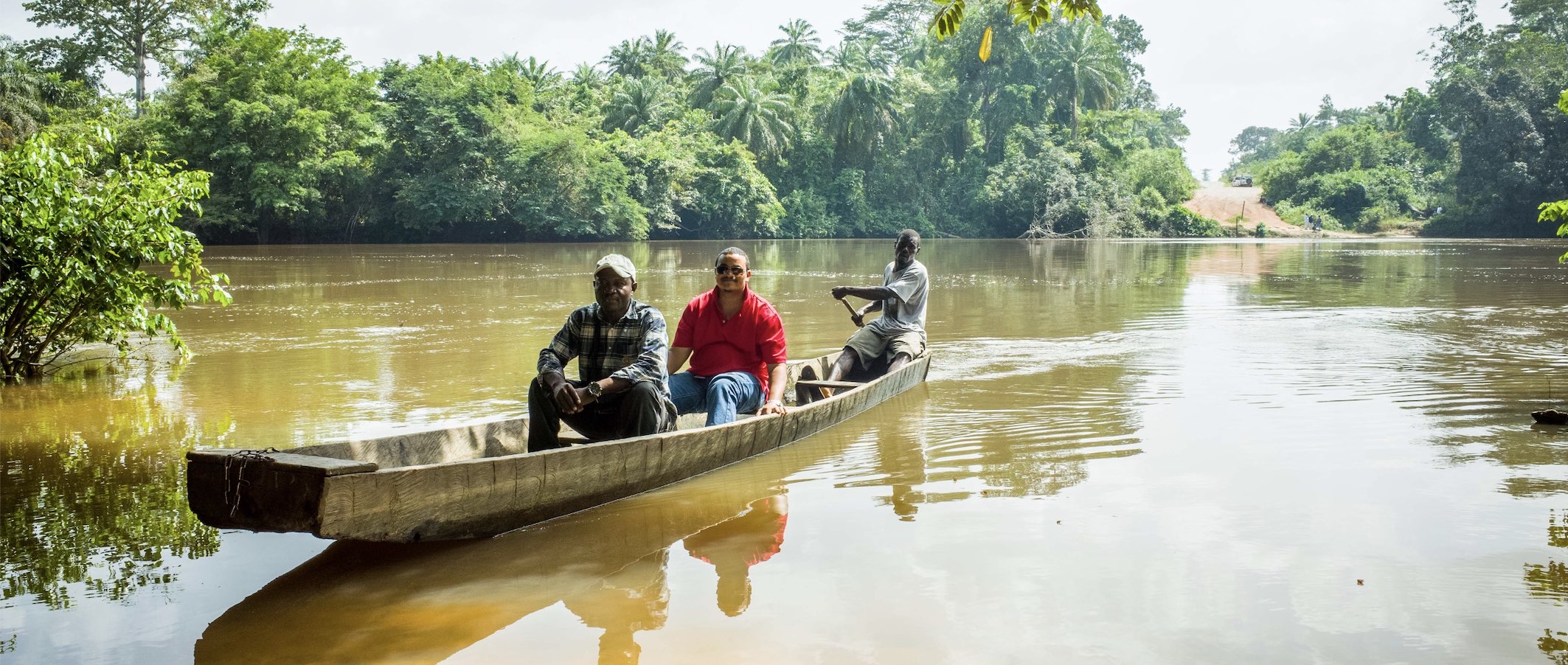
Advance the National Adaptation Plans process for medium term investment planning in climate-sensitive sectors and coastal areas in Liberia
The project’s objective was to support the Government of Liberia in advancing its National Adaptation Plan (NAP) process in climate-sensitive sectors: agriculture, energy, waste management, forestry, health, and coastal areas. The project was a first of its kind, approved by the Green Climate Fund (GCF) Board in November 2016 prior to the introduction of the GCF Readiness guidebook. The project informed the introduction and subsequent evolution of the guidelines on adaptation planning in Liberia.
Significant outcomes and outputs were achieved across four key areas. In Outcome 1, institutional frameworks were strengthened, and a climate change strategy was developed. Outcome 2 focused on expanding the knowledge base through risk assessments, economic studies, and a knowledge-sharing platform. Outcome 3 enhanced capacity for mainstreaming climate change into planning and budgeting, including technical guidelines and capacity-building programs. Lastly, Outcome 4 supported the scaling up of prioritized adaptation investments, identified policy options, and fostered public-private partnerships. These efforts contributed to Liberia's National Adaptation Plan, promoting resilience and sustainability in the face of climate change.
The GCF-funded project "Advance the NAPs process for medium-term investment planning in climate-sensitive sectors (i.e. agriculture, energy, waste management, forestry and health) and coastal areas in Liberia" aimed to strengthen institutional frameworks and coordination for the implementation of the NAP process, expand the knowledge base for scaling up adaptation, build capacity for mainstreaming climate change adaptation into planning and budgeting processes and systems, and formulate financing mechanisms for scaling-up adaptation.
In addition to the project delivery partner, the Environment Protection Agency and the National Climate Change Secretariat, other key partners included the Ministry of Finance and Development Planning, Ministry of Agriculture, National Disaster Management Agency, University of Liberia, Liberia Maritime Authority, Bureau of National Fisheries, Liberia National Department of Meteorology, Ministry of Mines & Energy, Ministry of Health, Liberia Institute of Statistics and Geo-Information Services, and the University of Liberia.
Liberia, like other developing countries, especially Least Developed Countries (LDCs), is vulnerable to the impacts of climate change. Despite having a low carbon footprint, the country anticipates severe consequences in key sectors, including agriculture, fisheries, forests, energy production related to the availability of water resources, coastal areas, and health. Approximately 70% of the population relies on agriculture for their livelihoods, with rural areas experiencing up to 80% vulnerability to food insecurity, according to the Environmental Protection Agency. Coastal regions, spanning 350 miles, face challenges from ongoing coastal erosion, sea level rise, storms, precipitation changes, and warmer ocean temperatures. Health risks include heightened vulnerability to diseases like malaria, cholera, and diarrheal diseases. Moreover, climate change may adversely affect hydroelectric generation from the Mount Coffee hydropower plant.
Liberia initiated its NAP process in 2015, establishing a roadmap in consultation with key stakeholders. This roadmap, grounded in the evaluation of existing climate initiatives and identification of gaps and capacity needs, serves as a guide for the short, medium, and long-term implementation of the NAP process in Liberia.
Key Project Results
Liberia submitted its NAP to the UNFCCC in 2021, with the project providing support in its development, including organizing a multi-sectoral working group to review and validate the final document. The project also achieved the following:
- Developed a comprehensive Climate Change Policy and Response Strategy.
- Supported the ratification of the Paris Agreement.
- Established the School of Environment and Climate Change at the University of Liberia, offering four graduate programs.
- Assessed climate change impacts on gender.
- Developed tools for mainstreaming climate change into programmatic activities.
- Conducted climate vulnerability/economic assessments and developed adaptation plans for key sectors.
- Implemented financial management and capacity support, including an enterprise resource planning system for the Environmental Protection Agency (EPA).
- Supported the national disaster risk assessment, development of the National Disaster Risk Reduction strategy, and launched the disaster database platform.
- Integrated economic assessments of adaptation studies in key sectors and developed a policy paper highlighting economic impacts of climate change in Liberia.
- Deployed 25 rainfall stations across the country to support the early warning system.
- Conducted capacity building for effective appraisal of investment priorities in sector ministries and mainstreamed climate change adaptation in sector strategies and plans.
- Established programs to inform and learn from the private sector on identifying climate variability and managing climate change (including setting up a private sector climate action alliance - Private Sector Working Group on Climate Change Adaptation Formed)
- Conducted policy analysis for future financing instruments/options for adaptation, including identifying alternative funding sources.
- Developed information products to support the private sector, particularly micro, small, and medium enterprises, in integrating adaptation into their investment planning.
Outcome 1: Strengthening of Institutional Frameworks and coordination for the NAPs process.
In the latter part of 2020, key activities under this outcome focused on enhancing the financial management and operational capacity of the Environmental Protection Agency (EPA) and the Climate Change Secretariat. This involved the implementation of an enterprise resource planning system. Additionally, a video documentary was developed to catalog essential project results, featuring feedback from key stakeholders and partners. The aim is to document lessons learned, challenges, success stories, and illustrate the meaningful impact the project has had in supporting climate change adaptation planning in Liberia.
1.1 Climate change strategy and action plan for adaptation developed as part of the NAP process.
Adaptation strategies and action plans for agriculture, forestry, fisheries, and coastal areas have been developed. Additionally, a national climate change adaptation strategy and action plan have been produced and formally launched, including the publication of Liberia’s NAP (2020-2030) document.
1.2. Coordination and monitoring enhanced for climate change adaptation program development across sectors.
The project assisted the Environmental Protection Agency (EPA)/National Climate Change Secretariat (NCCS) by conducting a capacity assessment and providing training in financial management, procurement, human resources, and other operational capacities. Subsequently, an Enterprise Resource Planning (ERP) System was established. The aim is to enhance the EPA's capacity in budgeting, accounting, governance, funds flow, financial reporting, internal control systems, and auditing for funds accessed from both the national budget and external sources.
Outcome 2: Expansion of the knowledge base for scaling up adaptation.
Liberia has faced a shortage of scientific data on climate impacts, including limited knowledge of current climate variability and risks, as well as the absence of an early warning system. The project expanded the knowledge base for scaling up adaptation interventions through various activities. This includes conducting economic assessments of adaptation strategies to inform funding proposals and national policies. Climate vulnerability and risk assessments were carried out to establish an evidence base for research, planning, and implementing adaptation action plans. Additionally, a knowledge-sharing platform was developed to facilitate information exchange and collaboration.
2.1. Risk assessments and economic impact studies in climate sensitive sectors conducted and incorporated in official data systems.
The project conducted a climate vulnerability and risk assessment for several sectors, including coastal, agriculture, forestry, fisheries, energy, and health (ongoing). Simultaneously, awareness-raising initiatives with relevant stakeholders were undertaken.
2.2. Effective knowledge sharing platform as a resource for climate relevant planning established.
The project conducted a gap analysis and collaborated with relevant IT staff and an international consulting firm to develop a climate change knowledge management platform. This platform, hosted at http://ccksp.gnf.tf, aims to expand knowledge and build capacities within the Liberian government. It serves as a repository for climate change-related data and information and offers training programs for a diverse audience, including practitioners, students, policymakers, and advocates. The project conducted at least six training sessions for staff from sectors such as waste management, forestry, energy, health, agriculture, and coastal management.
2.3. Climate Change disasters-related database developed.
The project procured and supplied meteorology equipment, including 25 rain gauges, for the Meteorology Department. These rain gauges have been strategically installed nationwide to enhance the production and distribution of weather information to various users, including farmers and fishermen. In addition, six staff members from the Meteorology Department received training on the operation of the system, ensuring effective utilization of the equipment.
Outcome 3: Strengthened capacity for mainstreaming CCA into planning, and budgeting processes and systems.
The project supported the formulation of mechanisms for scaling up adaptation investments and addressing financial gaps through various activities. This included assessing economic impacts and opportunities arising from climate change.
3.1. Technical guidelines for the personnel of the Ministry of Finance & Development Planning and other relevant Ministries, to mainstream climate change into budgeting and planning processes incorporating gender disaggregated data.
The project developed technical guidelines for personnel at the Ministry of Finance & Development Planning (MFDP) and other relevant ministries. These guidelines are designed to facilitate the mainstreaming of climate change considerations into budgeting and planning processes. Additionally, training sessions were conducted to familiarize personnel from MFDP and other sectoral entities with the use of these guidelines.
3.2. Capacity building programs on implementing adaptation investments and strategies established.
The project conducted a capacity assessment and developed a three-year climate change capacity development plan for the EPA and key sectoral agencies. The University of Liberia initiated its graduate program in 2019, the "School of Environmental Studies and Climate Change (SESCC)," in partnership with the EPA and UNDP. The project facilitated the provision of climate change adaptation textbooks to the school and fostered a partnership between the University of Liberia and the Least Developed Countries Universities Consortium for Climate Change (LUCCC), promoting research, knowledge sharing, and education in climate change. Eleven government staff members completed international training in climate change adaptation in Israel, and a south-south exchange tour for policymakers on knowledge sharing was successfully completed.
3.3. Monitoring and reporting system to track adaptation investments and implementation.
The project developed a detailed design for tracking climate finance, reviewed by stakeholders. An IT firm was hired to support the creation of a climate finance tracking system, integrated with monitoring and evaluation (M&E) indicators, and training sessions on the climate-proofing tool were conducted for the EPA team and other stakeholders. The National Monitoring System was assessed, resulting in a report with recommendations for integration into the national financial reporting systems, incorporating tracking tools and criteria to estimate adaptation financing in Liberia.
Outcome 4: Mechanisms to support scaling up of prioritized adaptation investments and addressing of financial gaps.
Outcome 4 included policy analysis for future financing instruments and options for adaptation. Alternative funding sources, such as private and local funds, were identified. The project created information products to support private sector engagement, with a focus on micro, small, and medium enterprises, helping them integrate adaptation into their investment planning. Furthermore, the project supported the development of costed investment plans for the agricultural sector and coastal areas in collaboration with partners. It successfully identified and prioritized at least two bankable projects and developed strategies to encourage private investments in new technologies and foster public-private partnerships for implementing climate change adaptation interventions.
4.1. Sector and area based costed investment plans prepared for scaling up adaptation in agriculture and coastal areas that take into account climate change risks and opportunities.
The project successfully developed and validated adaptation options for priority sectors, including agriculture, forestry, coastal areas, waste management, energy, and fisheries. This included the preparation of two bankable adaptation projects (agriculture and forestry, mangroves and ecotourism) for multi-sector implementation.
4.2. Policy options for scaling up financing for adaptation investments identified and recommended.
The project developed specific climate finance advisory products, offering detailed information on the country's climate finance landscape, criteria, funding amounts, and eligibility requirements. Stakeholders underwent climate finance training to enhance their understanding of available financing options. The project's identification of additional financing windows beyond traditional sources provides Liberia with opportunities to expand its resource mobilization for climate change action.
4.2. Foster Public Private Partnerships (PPPs) to support adaptation investments.
The project facilitated the creation of a private sector platform and developed knowledge products to support climate change adaptation planning. This included capacity-building support to encourage private sector engagement in climate action and attract private finance through partnerships and other financing options. The establishment of the Liberia Private Sector Climate Change Alliance served as a platform for collaboration between the private sector, government, and other stakeholders on climate initiatives. Great enthusiasm exists within the private sector to engage the government upon the realization that climate change represents a serious risk to private investment.
Crisis to Action: Liberia’s national adaptation plan addresses climate change (2023)
Liberia: Government Launches Country’s National Adaption Plan (2021)
Private Sector Working Group On Climate Change Adaptation Formed (2020)
National Adaptation Plans Report: Lessons from Liberia (2019)
University of Liberia launches new degree program on Environmental Studies (2019)
Building effective climate governance in Liberia (2018)
Need for Collective Partnership to Avoid Natural Hazards Stressed (2018)
Liberia Faces Natural Hazards Threat, EPA, UNDP Warn (2018)
University of Liberia to Commence Environmental Studies Soon (2018)
Liberia: 51 Vulnerable Youth and Women Trained in Production of Energy Efficient Cook Stoves (2018)
Integrating gender in the mitigation of climate change (2018)
EPA, UNDP Hold SDGs Training in Nimba (2018)
Liberia Launches National Policy and Response Strategy on Climate Change (2018)
UNDP and partners sign agreement on graduate programme for environmental studies (2018)
Liberia set to launch National Policy and Response Strategy on Climate Change (2018)
UNDP Equips EPA Monitoring System (2018)
National Disaster Management Agency, UNDP-Liberia Conduct Training on National Disaster Readiness (2018)
Government, Partners Launch National Adaptation Plan of Liberia (2018)
Environment chief: Why we’re prioritizing climate governance in Liberia (2018)
Liberia receives first instalment of US$2.2 million GCF grant for climate adaptation (2015)
GCF approves first grants for National Adaptation Planning in Liberia and Nepal (2015)

Advancing medium and long-term adaptation planning and budgeting in Niger
The project activities aim to strengthen adaptation-related prioritization and planning, financing and capacity development, supporting Niger in integrating climate change into medium- and long-term development planning and budgeting through the NAP process. Reducing Niger’s vulnerability to climate change requires greater investments and greater integration of climate change adaptation and disaster risk reduction into ongoing development programmes. The project works in synergy with other initiatives. It supported the National Disaster Risk Prevention and Management Facility to integrate climate change into its strategy, and the development of the NDC through gender studies and climate scenarios. The project also enables the implementation of Niger's national climate change strategy. The project addresses the main challenges in integrating climate change adaptation into planning and budgeting in Niger, as identified in its NAP Stocktaking Report.
The exposure to climate risks, associated with its position as a Sahelian landlocked country, makes Niger one of the most vulnerable countries in the world. The 42.8 percent of the GDP, and 80 percent of the workforce are employed in the agriculture, forestry and livestock sectors. Climate change is expected to worsen climate risks over the next decades, with an increase in the frequency of droughts, resulting in a decrease in agricultural production, an increase in grazing pressure on pastoral ecosystems, and consequently soil erosion on a mass scale, threatening food security; and floods resulting from the heavy rainfall. The country was ranked 188 out of 188 in the UNDP’s Human Development Index in 2015, with 89.8 percent of the population living in multidimensional poverty.
The foundations for the NAP process have been built through the preparation of the National Adaptation Programme of Action (NAPA) in 2006 with support from UNDP and the Global Environment Facility (GEF). The NAPA identified urgent and most immediate needs in seven vulnerable sectors and fourteen priority adaptation interventions. The National Climate Change Policy (PNCC) adopted in 2013 provides the overall strategic framework to tackle climate change. To move beyond urgent and immediate needs, and towards a medium-term approach, Niger intends to integrate climate change into medium- and long-term development planning and budgeting through the NAP process, under its obligation to the UNFCCC and as stated in its PNCC. This process will contribute to ensuring that the country’s long-term development strategy - starting with its Sustainable Development and Inclusive Growth Strategy (SDDCI) and its National Economic and Social Development plans - be based on an understanding of climate-related risks and opportunities for inclusive growth and sustainable development.
Niger has been advancing its NAP process by conducting a preliminary stock take of relevant initiatives on climate adaptation and mainstreaming to identify gaps and needs. A NAP roadmap was subsequently drafted, which outlined the main steps and timeline of advancing the NAP process in Niger.
This project will be steered at country level by the Executive Secretariat of the National Council of Environment for Sustainable Development (SE/CNEDD), which is the coordinating body for all Rio Conventions and climate change-related initiatives and the National Designated Authority to the GCF. It will closely engage the Ministry of Planning and the Ministry of Finance, as well as key sectoral ministries, national training and research institutions and civil society, including the private sector. It will closely coordinate with other related initiatives such as the GEF-LDCF adaptation planning in the water sector project, the EU-funded PARC-DAD and the World Bank Pilot Programme for Climate Resilience. The project is aligned with the “Nigeriens Nourish the Nigeriens” Initiative (Initiative 3N), the Sustainable Development and Inclusive Growth Strategy (SDDCI), the National Economic and Social Development Plan (PDES), and the National Climate Learning Strategy.
Project updates
The draft NAP was developed through consultations (ministries and technical institutions, representatives of communities, the private sector, religious and traditional leaders, women's and youth organizations, civil society and media), combined with an analyses of climate data and vulnerability to climate change and assessments and capacity building of stakeholders. 25 adaptation options were identified and prioritized for the five sectors (livestock, health, transport, forestry and wetlands) and the draft NAP document was enriched and validated through regional workshops; the final validation through a national workshop is scheduled for 2022.
In collaboration with other entities, including the Executive Secretariat of the National Environment Council for Sustainable Development (CNEDD), a monitoring and evaluation system is being set up to track the progress of climate change adaptation initiatives.
In addition, a communication and knowledge management strategy has been developed to disseminate the results of the NAP process.
Output 1: National mandate, strategy and steering mechanism are in place and gaps are assessed and addressed
Output 2: Preparatory work for the NAP undertaken to develop a knowledge-base and compile a NAP
Output 3: NAP implementation facilitated
Output 4: Mechanisms for Reporting, Monitoring and Review of NAPs and adaptation progress in place
Output 5: Funding strategy for the NAP and CCA is available
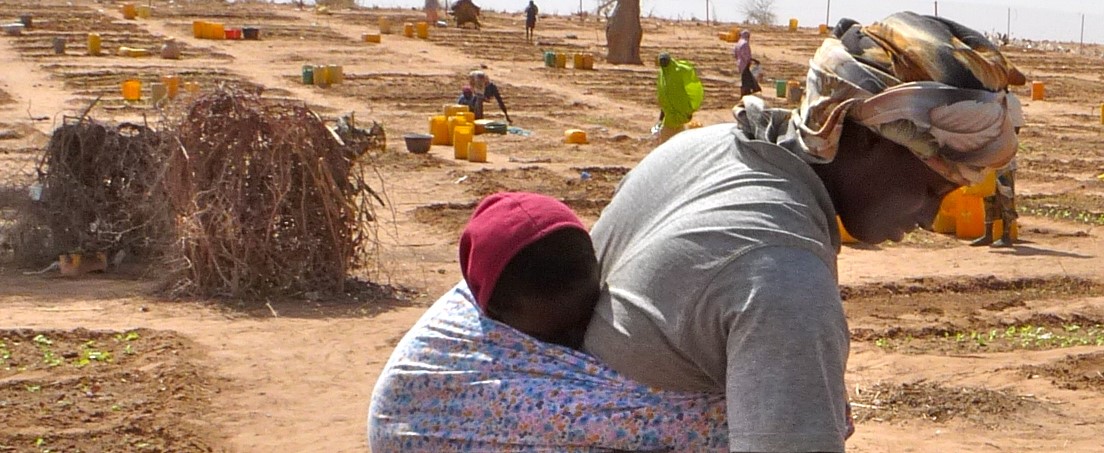
NAP-2: Advancing Moldova’s National Climate Change Adaptation Planning process
Funded by the Green Climate Fund (GCF) Readiness Programme, the "NAP-2: Advancing Moldova’s National Climate Change Adaptation Planning Process" project is supporting the Government of Moldova to develop the country’s national development plan for climate change adaptation. The project aims to 1) strengthen and operationalize the national steering mechanism for climate change adaptation, 2) improve the long-term capacity for planning and implementation of adaptation actions through CCA technologies; and 3) improve the mainstreaming of climate change adaptation in priority sectors through the increased alignment of national development priorities.
The project aims to address the barriers to prioritizing national investments in climate change adaptation and increase the human and financial capacity for the implementation of the priority actions identified during the NAP-1 project, including those that will emerge under this NAP-2 initiative. To accomplish this overall goal, the project activities have been designed to address the gaps and barriers also identified in the NAP-1 and the Stocktaking Report. Through the NAP process, Moldova is realizing a long-term paradigm shift towards climate resilience in its national and sectoral development planning.
The Government of Moldova sees the National Adaptation Planning (NAP) process as a key to achieving the adaptation objectives outlined in its 2014 Climate Change Adaptation Strategy and its Nationally Determined Contributions (NDC), as well as the continued mainstreaming of climate change considerations into its policies and budgeting processes. The NAP process was launched in 2014 through consultations with national stakeholders with the support of the Austrian Development Agency (ADA) and UNDP.
Over the last decade, the Republic of Moldova has experienced several extreme events, such as droughts and major floods. These events, coupled with the gradual impacts of rising average temperatures and uneven precipitation patterns throughout the year, have adversely affected the country's economy and the well-being and health of its population. Severe droughts are recurring more frequently causing significant economic losses. In 2007 and 2012, droughts resulted in estimated losses of approximately USD 1 billion and USD 400 million, affecting 80% of the rural population. Meanwhile, flood damages in 2008 and 2010 are estimated at around USD 120 million and USD 42 million, respectively. Climate projections suggest a continued rise in average temperatures and an additional 12 days with zero precipitation, posing ongoing challenges for the country.
In addition to the key implementing partner, the Ministry of Environment, other project partners include the Ministry of Infrastructure and Regional Development, Ministry of Energy, Ministry of Finance, Ministry of Health, and the National Commission on Climate Change.
Expected results:
- National Climate Change Adaptation Strategy updated with the NAP-2 overarching goal and sector-specific adaptation objectives articulated in the Climate Change Adaptation Action Plans of health and forestry sectors, and in the Development Action Plans of the transport, energy and building sectors.
- Monitoring and Evaluation system with improved data analysis to support decision-making developed.
- Climate Change Adaptation Capacity Development Plan updated and adopted by the five key sectors.
- Climate change information and knowledge management portal that supports the NAP process and mainstreaming of climate change adaptation considerations launched.
- Adaptation Plans for seven district towns developed.
- Technology Roadmap for each key sector (transport, energy, water, forestry and health) developed based on Technology Needs Assessment.
- 5 investment project ideas developed to be submitted to Green Climate Fund.
Project updates
The NAP-2 project actively engages with the Minister of Environment and key stakeholders, facilitating ongoing discussions on project activities, accomplishments, and challenges. Recognizing the need for a coordinated approach to climate change activities, the Ministry of Environment requested an analysis of the existing regulatory framework, aiming to identify gaps and propose operational coordination mechanisms. This effort has involved exploring options to upgrade the National Commission on Climate Change (NCCC), with potential integration with other bodies such as the National Council on Sustainable Development or the National Commission on Emergency Situations.
The National Climate Change Adaptation Programme (NCCAP) until 2030 and its Action Plan, approved by the Government on 30 August 2023, has been developed in a participatory manner that supports the alignment of the national adaptation goals with the aims of the Paris Agreement in transport, energy, water, forest, and health sectors. Guidelines and tools for conducting Climate Change Impact, Vulnerability, and Risk Assessments (CCIVRA) at sector and organization levels have been developed. The project has ensured that these tools are not only comprehensive but also user-friendly. Additionally, a Monitoring and Evaluation (M&E) framework for the NAP process has been devised.
The project has delivered the Climate Change Capacity Development Plan (CDP) which lays the foundation for strengthening institutional capacities to mainstream climate change considerations into sectorial policies and implementation of the policies. This has involved consultations to define sector-specific adaptation targets and integrating them into sectorial development plans. In addition, the Climate Change Knowledge Management Roadmapwas developed which provides a better understanding of the national capacities needed to produce, collect, and use climate change information and knowledge. This forms the foundation for the Climate Change Information and Knowledge Management Platform, a one-stop shop for all climate-related information under development.
The project has supported the assessment of the meteorological and hydrological network which enabled the State Hydro-meteorological Service of Moldova (SHS) to seek further support from Sweden, World Bank and Meteo-France International in terms of data digitalization and improving meteorological and hydrological monitoring. Market research was finalized for the introduction of new climate services and increasing awareness of the importance of hydrometeorological and climate services. Moreover, the SHS has developed the Law and Regulation on hydrometeorological activity and methodology for calculating tariffs for climate services.
Regarding the technology needs assessment (TNA), the ‘Identification and prioritization of adaptation sectoral technologies’ and ‘the Barrier Analysis and Enabling Framework of TNA analysis’ were conducted involving relevant stakeholders from the five priority sector Working Groups (water, transport, energy, forestry, health). As a result, 115 technology fact sheets (TFS) as well as elaborated versions of the 53 TFS were produced and measures to overcome barriers were identified.
Other recent activities have included further consultations on improving coordination mechanisms, creating a training curriculum and master's course on climate change adaptation in the health sector, and developing the NAP-3 project document, including a roadmap and financing plan. Furthermore, other activities have involved training, data collection methodologies, aligning national codes with EU standards, and supporting the Ministry of Infrastructure and Regional Development with construction standards/codes for at-risk assets in the transport and construction sectors.
The project objectives will be achieved through three outcomes, focusing on strengthening national capacities for mainstreaming climate change adaptation considerations, producing actionable climate risks and vulnerability assessments, and implementing effective methods, tools, and information systems to better inform decision-making on climate risks. The three outcomes build on each other in a progressive and interrelated approach that strengthens the national conditions for adaptation.
Outcome 1: National steering mechanism for climate change adaptation strengthened and operationalized
Outcome 2: Long-term capacity on planning and implementation of adaptation actions improved
Outcome 3: Mainstreaming of climate change adaptation is improved through the increased alignment of national development priorities, in the priority sectors (forestry, health, energy and transport).
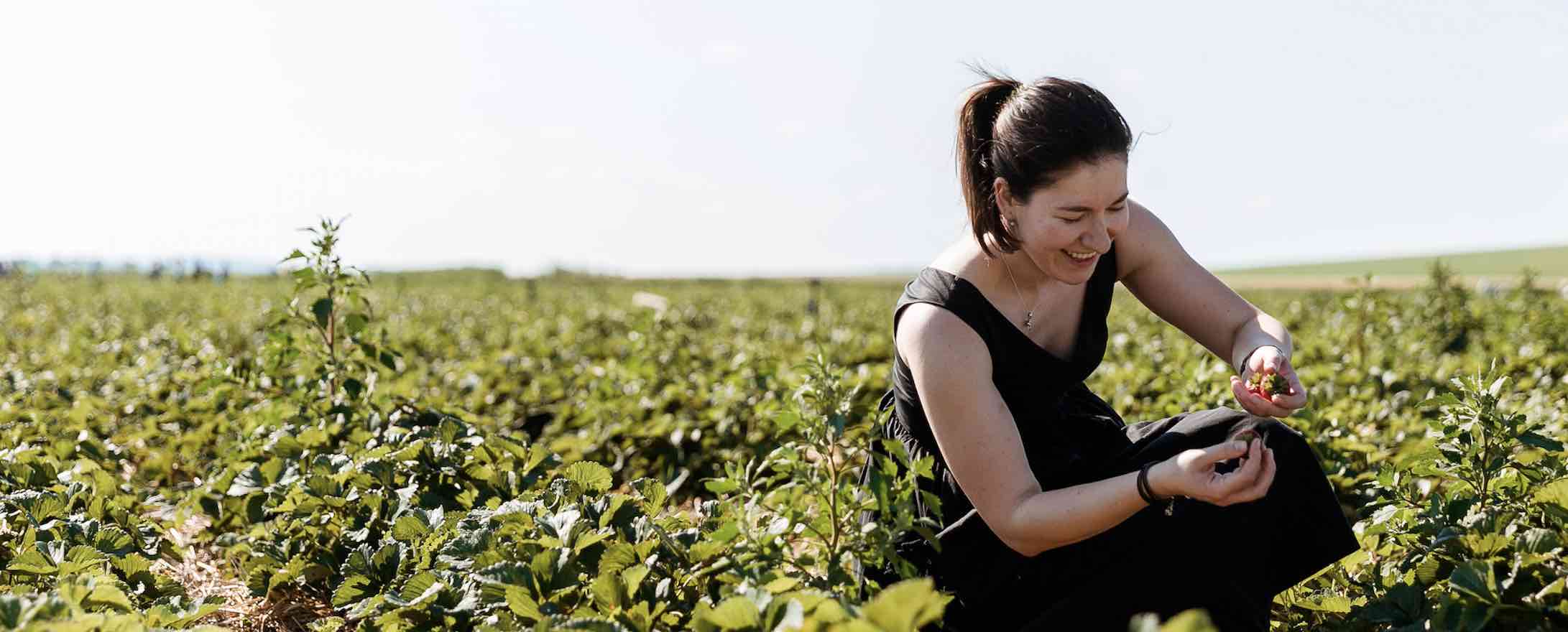
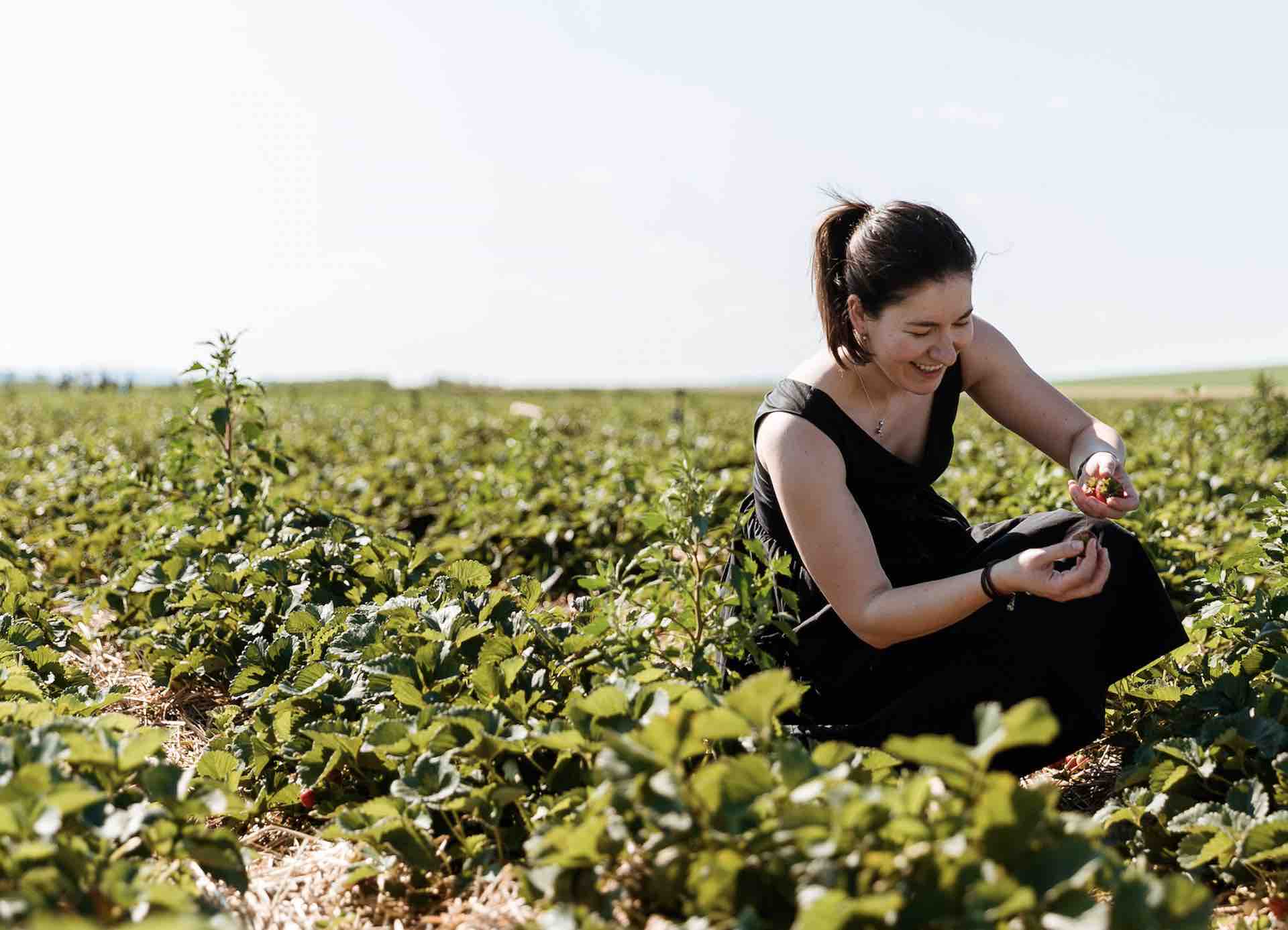
Integrating Community-Based Adaptation into Afforestation and Reforestation Programs in Bangladesh
The project is working to transform the way greenbelt afforestation and reforestation programs in Bangladesh are designed and developed. It will ensure that new afforestation programs are made resilient to anticipated climate change risks through a combination of (a) planting of climate resilient mangrove and non-mangrove varieties, (b) adoption of new planting and management techniques by communities that take climate change risks into account; and (c) greater and continued community participation in the management and long-term protection of new greenbelt structures, in partnership with relevant sub-national government entities.
Source: Bangladesh Project Identification Form (November 23, 2011)
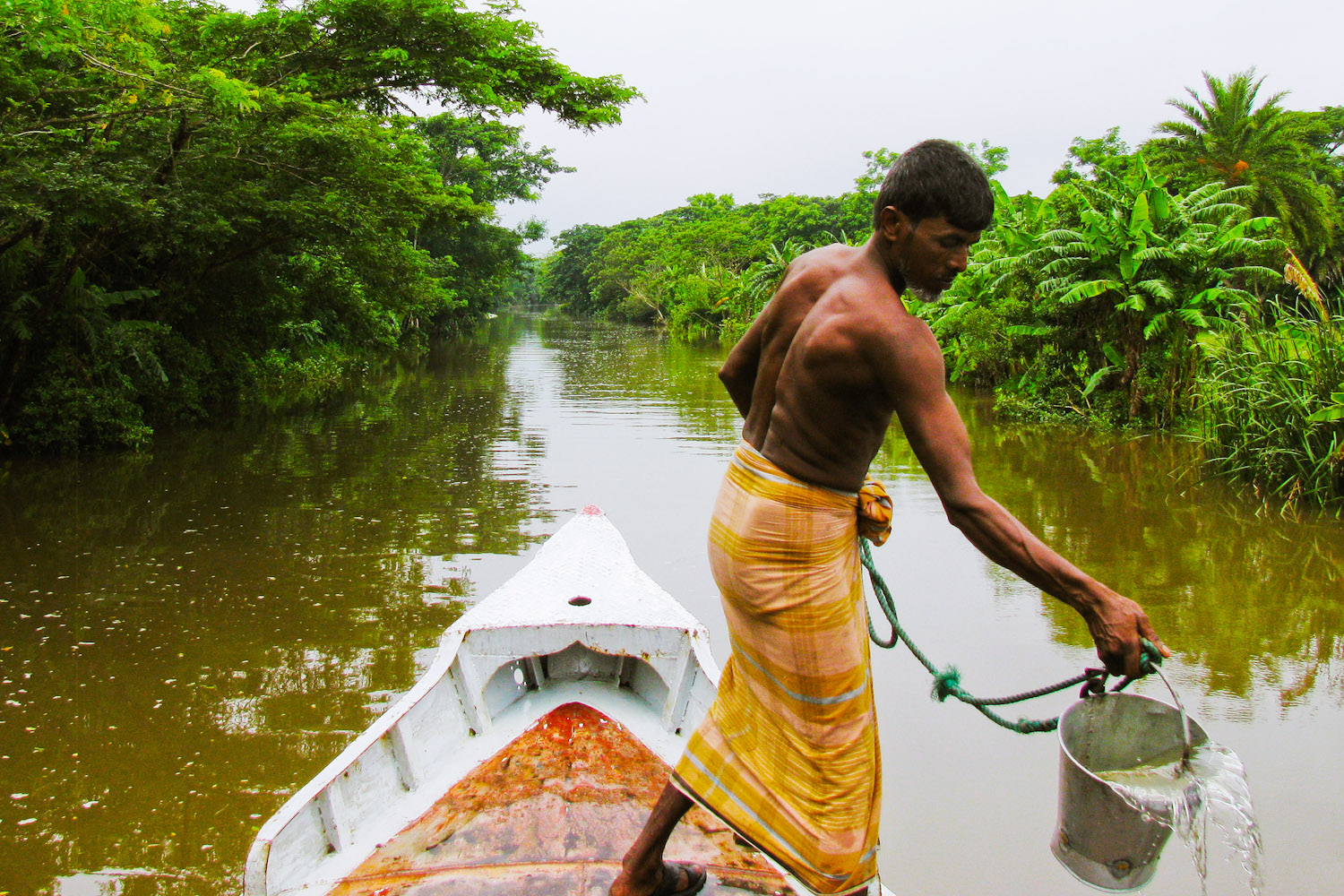

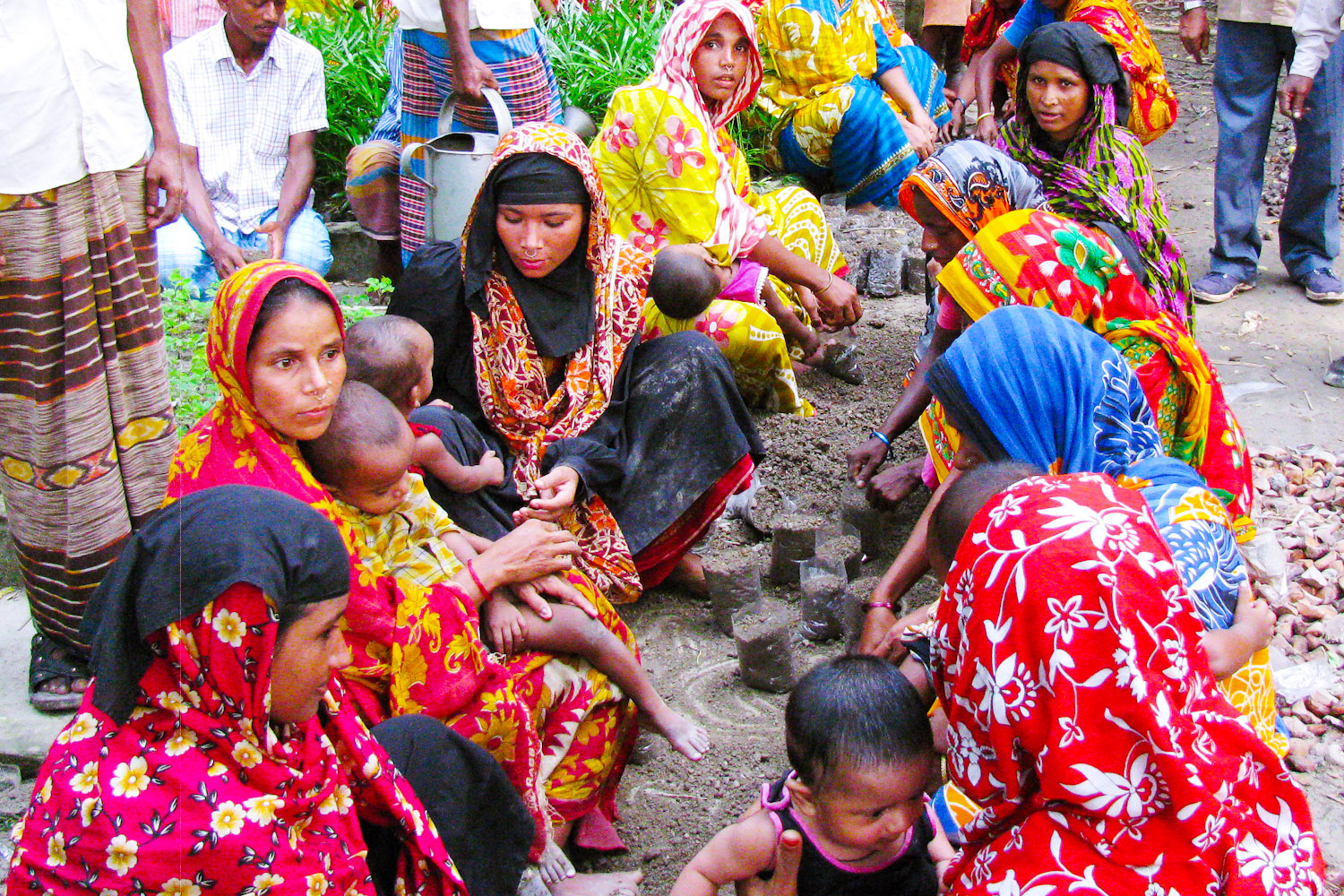
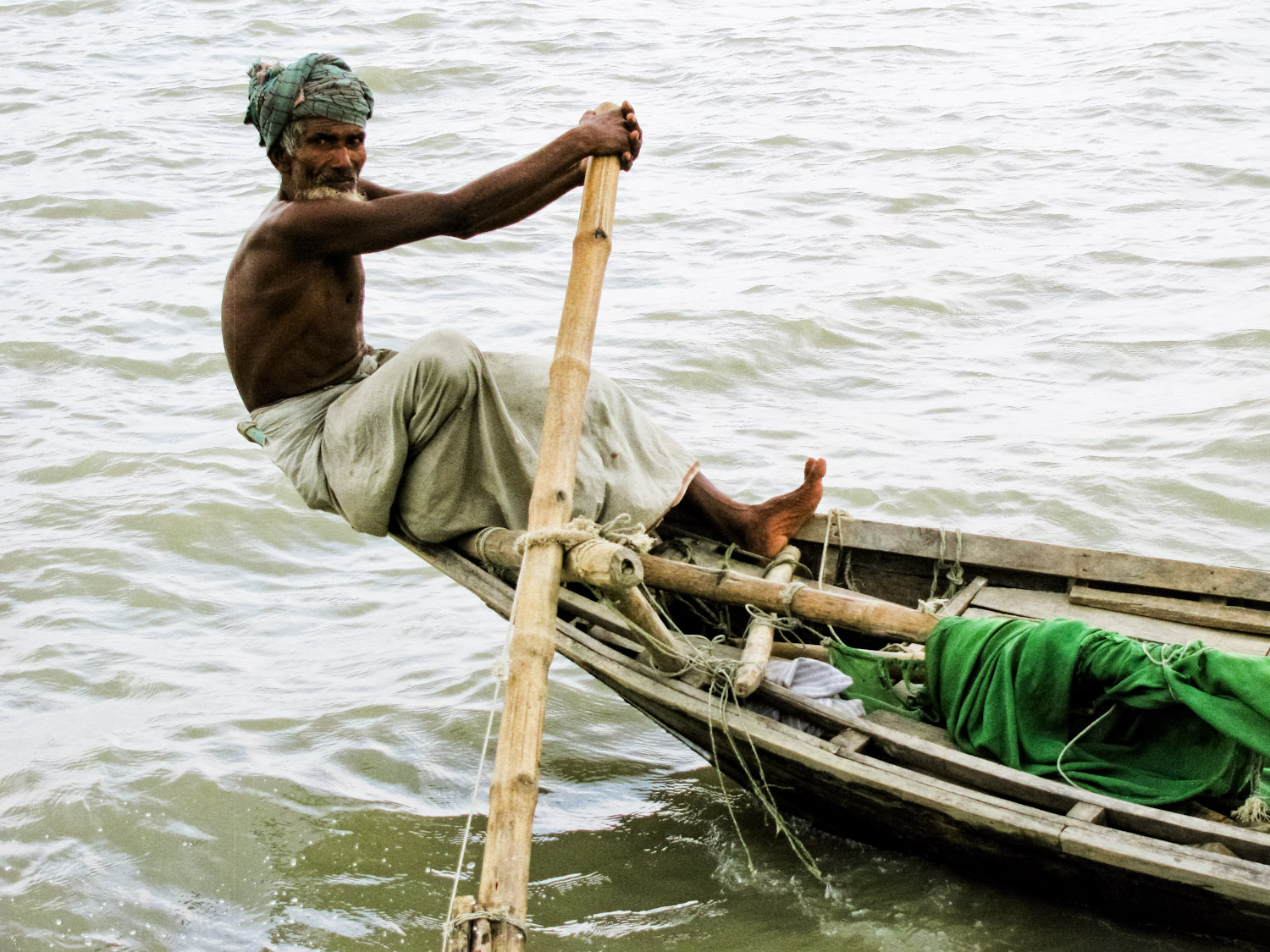
PIFs
Bangladesh Project Identification Form PIMS 4878 (November 2011)
Through alignment with a substantive forestry project that is financed by the Government of Bangladesh, this LDCF-funded project will increase the resilience and adaptive value of ongoing government investments in vulnerable areas and communities. Besides the immediate vulnerability reduction benefits this LDCF project will generate, it will leverage additional public, bilateral and multilateral investments for community-based adaptation in the context of business-as-usual forestry activities
In line with LDCF eligibility criteria and guidelines, the project will use LDCF resources to finance the additional costs of achieving resilience against climate change risks of a government-funded baseline programme, which is not yet taking climate change resilience aspects into account. The proposed project is exclusively country-driven, well coordinated with a number of other LDCF- and non-LDCF-funded projects, and will integrate climate change risk considerations into areas that are priority interventions eligible under LDCF guidelines (especially coastal development and forest management). In alignment with LDCF guidelines, the project will
- Expand the resilience of natural and social systems against climate change hazards, focusing on the community level;
- Enable the development of response strategies to reduce the adverse effects of sea level rise;
- Improve local and national awareness and understanding of the benefits of preparedness for climate change risks.
Although the project is undertaking community training activities in nursery management, it does not consider additional livelihood support and -diversification activities that could complement and sustain afforestation activities over the longer term. The persistent lack of alternative livelihood options and the pressures of poverty leave local communities with limited incentives to nurture and protect new greenbelt plantations: The ensuing effects of human and livestock encroachment result in a situation in which many afforested patches need to be repeatedly re-planted before they reach maturity to serve as protective shields.
The baseline project is therefore at risk of perpetuating this problem and doing 'more of the same': Its objective is to create and conserve coastal forests with community participation, but the lack of livelihood resilience and the pressures of poverty (which are in turn exacerbated by climate-related shocks such as seasonal flooding and tropical cyclones) create a situation in which the incentives for encroachment on new plantations keep outweighing the incentives to nurture them.
This can only be reversed if the planting of trees is coupled with targeted activities to strengthen and diversify livelihoods. If greenbelts are not perceived as an essential protective asset of rural livelihood systems, they will be used as a free economic resource that will continue to get replenished by the government. As the underlying baseline project does not make a systematic connection between forestry measures and complementary investments to sustain these new plantations through long-term community engagement, the proposed LDCF funding is clearly an additional measure to ensure that greenbelt forestry in Bangladesh can evolve from the business as usual scenario to a long-term model which generates adaptation benefits for future generations.
An additional factor that makes the aforementioned baseline project vulnerable to the effects of climate change is the continued use of monoculture practices: The BFD propagates the use of a single mangrove species (locally known as 'Keora"), which is suitable to trap sediment on newly accreted lands but keeps encountering a new set of climate change-related challenges: The temperature of coastal waters is rising (following global trends), and there is greater variability in inundation levels, inundation times, as well as salinity of soil and water. As a result, Keora plantations suffer from a higher rate of diseases and fail to regenerate naturally. Field assessments have found that at the maturity stage of 'business as usual' mangrove plantations (after 15 years), only 800 to 900 trees per hectare survive out of 4444 seedlings that had originally been planted. This represents a loss of up to 80% of planted trees and generates big gaps in greenbelt structures on moderately accreted lands, which need to be continuously re-planted.
There is an urgent necessity to fill these gaps with a more innovative mix of mangrove species that have vigorous regenerating abilities and increase the genetic diversity of these greenbelts. The proposed LDCF project will introduce a diversified set of 8-10 selected mangrove species in 4 coastal districts, in which this problem is most apparent. In doing so, LDCF resources will address an evident climate change-related problem in a baseline afforestation project: Without LDCF investments, the baseline project will not be able to sustain critical plant density per hectare, and buffer the effects of higher water temperatures, higher/longer tidal inundations, and shifting salinity levels.
At present, it is fair to say that without additional improvements in the functional design and community ownership of the above baseline project, the planting of trees in coastal belts does not qualify as a long-term adaptation and/or resilience measure. There are evident and substantive problems in establishing and sustaining new greenbelt structures as protective buffer zones from climate-induced stresses, which need to be addressed by additional activities, such as: a) Changing the mix of mangrove and non-mangrove species to increase the natural adaptive capacity of coastal forests; b) Providing economic incentives for communities to nurture, protect and conserve newly planted greenbelt structures; and c) Developing long-term benefit sharing agreements between communities and the national government for the selective logging of economic tree varieties.
Source: Bangladesh Project Identification Form (November 23, 2011)
- Outcome 1: Vulnerability of communities in new afforestation and reforestation sites reduced through diversified livelihood options and more effective greenbelts
- Output 1.1: Community-based adaptation and livelihood diversification measures, such as integrated fish/fruit/forest-farming, diversified livestock rearing and salt tolerant/flood resistant crop farming are integrated with baseline afforestation and reforestation activities in 19 districts
- Output 1.2: Diversified trial plantations of up to 10 mangrove and non-mangrove varieties are established in 4 districts to increase the adaptive capacity of greenbelt structures on newly accreted lands
- Outcome 2: Strengthened community involvement in, and ownership of, forestry-based adaptation and climate risk reduction programmes
- Output 2.1: Dialogue platforms established in all coastal districts to enable participative planning and management of climate resilient afforestation programmes between district, upazila and union officials and local communities
- Output 2.2: A forest product benefit sharing agreement between coastal communities and national government is developed and adopted in at least 5 districts
- Output 2.3: An institutional cooperation agreement and code of practice between community-based organizations and the Forest Department is developed and adopted to enable effective co-management of community-based adaptation and afforestation programmes
- Outcome 3: Communal livelihood assets in afforestation and reforestation sites are protected from extreme climate events through effective early warning and preparedness planning
- Output 3.1: Effective early warning communications for extreme climate events are regularly disseminated to communities in all afforestation and reforestation sites
- Output 3.2: Communal livelihood assets in new afforestation and reforestation sites are protected from extreme climate events through dedicated disaster preparedness and risk reduction measures (such as flood-resistant agricultural plots; protection of aquaculture and freshwater supply infrastructure; safe havens for livestock)
Source: Bangladesh Project Identification Form (November 23, 2011)
Project Start:
Project Inception Workshop: will be held within the first 2 months of project start with those with assigned roles in the project organization structure, UNDP country office and where appropriate/feasible regional technical policy and programme advisors as well as other stakeholders. The Inception Workshop is crucial to building ownership for the project results and to plan the first year annual work plan.
Daily:
Day to day monitoring of implementation progress: will be the responsibility of the Project Manager, based on the project's Annual Work Plan and its indicators, with overall guidance from the Project Director. The Project Team will inform the UNDP-CO of any delays or difficulties faced during implementation so that the appropriate support or corrective measures can be adopted in a timely and remedial fashion.
Quarterly:
Project Progress Reports (PPR): quarterly reports will be assembled based on the information recorded and monitored in the UNDP Enhanced Results Based Management Platform. Risk analysis will be logged and regularly updated in ATLAS.
Annually:
Annual Project Review/Project Implementation Reports (APR/PIR): This key report is prepared to monitor progress made since project start and in particular for the previous reporting period (30 June to 1 July). The APR/PIR combines both UNDP and GEF reporting requirements.
Periodic Monitoring through Site Visits:
UNDP CO and the UNDP RCU will conduct visits to project sites based on the agreed schedule in the project's Inception Report/Annual Work Plan to assess first hand project progress. Other members of the Project Board may also join these visits. A Field Visit Report/BTOR will be prepared by the CO and UNDP RCU and will be circulated no less than one month after the visit to the project team and Project Board members.
Mid-Term of Project Cycle:
Mid-Term Evaluation: will determine progress being made toward the achievement of outcomes and will identify course correction if needed. It will focus on the effectiveness, efficiency and timeliness of project implementation; will highlight issues requiring decisions and actions; and will present initial lessons learned about project design, implementation and management. Findings of this review will be incorporated as recommendations for enhanced implementation during the final half of the project's term.
End of Project:
Final Evaluation: will take place three months prior to the final Project Board meeting and will be undertaken in accordance with UNDP and GEF guidance. The final evaluation will focus on the delivery of the project’s results as initially planned (and as corrected after the mid-term evaluation, if any such correction took place). The final evaluation will look at impact and sustainability of results, including the contribution to capacity development and the achievement of global environmental benefits/goals. The Terminal Evaluation should also provide recommendations for follow-up activities.
Project Terminal Report: This comprehensive report will summarize the results achieved (objectives, outcomes, outputs), lessons learned, problems met and areas where results may not have been achieved. It will also lie out recommendations for any further steps that may need to be taken to ensure sustainability and replicability of the project's results.
Learning and Knowledge Sharing:
Results from the project will be disseminated within and beyond the project intervention zone through existing information sharing networks and forums.
The project will identify and participate, as relevant and appropriate, in scientific, policy-based and/or any other networks, which may be of benefit to project implementation though lessons learned. The project will identify, analyze, and share lessons learned that might be beneficial in the design and implementation of similar future projects.
Establish a two-way flow of information between this project and other projects of a similar focus.
1. Coastal Afforestation project receives Earth Care award 2012.
2. Coastal Afforestation project receives Adapting to Climate Change Award 2013.
3. National Workshop on Climate Resilient Adaptation Measures and Policy Recommendations organized by CBACC-Coastal Afforestation Project.
'New project launched to reduce climate vulnerabilities of coastal communities' – UNDP Bangladesh, March 22, 2017. On March 22 in Dhaka the Minister for the Environment and Forests officially launched the four-year project, ‘Integrating Community-based Adaptation into Afforestation and Reforestation Programmes in Bangladesh’. An inception workshop – attended by the Deputy Minister, Ministry of Environment and Forests; the Secretary in Charge of the Ministry of Environment and Forests; UNDP’s Deputy Country Director and Additional Secretary, and the National Project Director – marked the launch.
